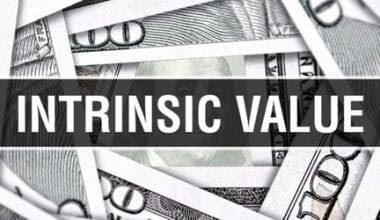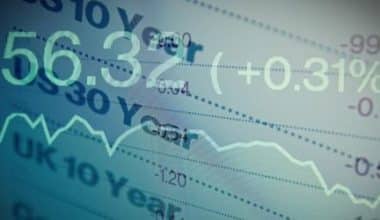The ever-changing level of inventories in an economy is also known as inventory investment, and its impact on the economy cannot be underestimated. There are many measurements that economists and other financial experts use to determine the overall strength of a particular economy. They often focus on consumer consumption levels as one way to determine whether the economy is moving in the right direction. No less important could be the reaction of companies regarding how many products they have in stock. From this post, we will get to know more about what inventory investment is all about, including its types and the formula for calculating it.
What Is Inventory Investment?
Investment in inventories is a phrase used by economists to explain the change in the levels of inventories held by businesses from one year to the next, including work in progress, both tangible and intangible inventories.
Intangible investments are more applicable to qualified services, such as consulting work, where money has been spent on gathering data that will be used for future research.
One of the primary uses of inventory investment analysis is its utility as a tool to better understand the business cycle.
How Do They Work?
The amount of inventory an economy has in raw numbers is not a very useful measurement without some context. This is why economists focus on the change in inventory investment from one period to the next.
Thus, the behavior of enterprises regarding their stocks in one period of time can have a clear impact on the behavior of the economy as a whole in future periods.
It is important to note exactly what is included in inventory measurement when trying to understand how it relates to the economy. To measure them accurately, inventory levels should only be measured at the end of a time period, as sales will affect inventory levels during a period and skew the numbers.
Also, inventory investments are only relevant in terms of how they relate to current production levels. This is why it is measured by how it changes from one period to the next, as past production of the inventory is not taken into account.
What Are The Three Types Of Inventory Investment?
Considering the types of inventory investment we have, an economist will have to know the exact investment he is working on. Below are the three types of inventory investment we have:
#1. Dead Inventory
Dead inventory is a fairly self-explanatory term. This refers to stocks that customers do not buy for whatever reason. This means it stays in storage, not bringing you any profit.
It actually hurts your bottom line because it takes away money and space that could be used for other products. Most estimates define dead stock as stock that has not been taken off the shelves in the past six months.
Some businesses have a particular struggle with dead stock because they know they will sell their inventory eventually, but they certainly don’t sell it often. This means that most of the time, it sits on their shelves and serves no purpose.
A common solution for this is to keep this kind of inventory for special orders that customers can place as needed. This way you don’t waste time, space, or money.
As for other inventory that qualifies as “dead”, try marking it up to see if you can incentivize customers to buy it on flash sale. And if that doesn’t work, your last and smartest option is to mark it as unsold in your inventory records.
At this point, you can contact the distributor to see if they are interested in a return. If that’s not possible, consider donating the item to charity as a tax write-off. With dead stock, it’s all about taking what you can get and avoiding the same mistake in the future.
#2. Slow-Moving Inventory
Meanwhile, some stocks cannot be classified as dead, but they meet the criteria of the slow movement. As one of the types of inventory investment, slow-moving inventory can be difficult to categorize and identify. Recessions and other criteria can turn normal inventory into slow inventory.
This hampers the cash flow of your business as inventory remains and transactions go unfulfilled. As for your investors, they will look at slow-moving stocks and see a lower return on capital.
However, to truly identify a slow-moving stock, you’ll need to look not only at your own stocks but also at the stocks of other companies in your industry and market.
#3. Product Inventory
Nevertheless, performing inventory is exactly what it sounds like: it’s inventory that moves off the shelves and produces a profit while providing reliable cash flow.
Even if your inventory is performing well, it’s still worth reviewing it every now and then to know what you’re doing right and what you’re doing wrong.
However, knowing the right formula for calculating an inventory investment is also essential for inventories. Read on to know its formula
Formula For Inventory Investment
Inventories are proportional to the firm’s output. This relationship is captured by a model called the acceleration model. The model argues (proposes) that when output is high, production units need more raw materials and finished goods. And they have more work-in-progress (or semi-finished goods).
During upturns in business cycles, when consumer demand is high, retailers place more orders with manufacturers. Thus, from the inventory investment formula below, if N is the stock of inventories in the economy and Y is output, we have
N = βY
Thus, from the inventory investment formula above, β is the proportionality factor. It shows how much inventory firms are planning to hold as a proportion of output.
Inventory investment Ii is the change in the stock of inventories ΔN. Thus we have
Ii. = ΔN = βΔY
A key prediction of the acceleration model is that inventory investment is proportional to the change in GDP. During the expansion phase of the business cycle, when output increases, firms plan to hold large amounts of inventory.
Therefore, investment in inventory is high. During the contraction phase of the business cycle, when output falls, firms want to hold a small amount of inventory. When they reduce their inventory, investment in inventory becomes negative.
The name of the “acceleration” model comes from the fact that ΔY is the “acceleration” of production. If Y (output level) is high but not growing, there will be no acceleration of investment. This means that inventory investment depends on the phase of the business cycle, that is, whether the economy is accelerating or decelerating.
The acceleration effect is very strong for inventory investments because lags are less important for inventories than for fixed capital investments. The acceleration model explains a significant proportion of investment changes. This partly explains the close relationship between investment and GDP.
Unplanned Inventory Investment
Businesses invest in inventories today to sell them in the future. The amount they invest is based on assumptions about the costs, sales, and grow the business is planning.
If any of these assumptions change, or if business reality does not match these expectations, then the business must change its investment in inventory.
This change leads to an unplanned investment in inventory. Companies may invest more than they originally planned if growth is higher than expected or if costs are lower than expected.
Likewise, businesses may invest less than planned if sales are low or costs are high. These assumptions and plans change from month to month, week to week, and sometimes even day to day.
For example, a gift shop will need more stock for the Christmas holiday due to increased sales this season. Or the bar may need more stock on Fridays and Saturdays because people are more likely to eat out on the weekend rather than work in the evening.
How To Calculate Unplanned Inventory Investments
To calculate the company’s unplanned investment in inventory, subtract the inventory you need from the inventory you have.
If the resulting unplanned inventory investment is greater than zero, then the company has more inventory than it needs.
When this happens, the company has invested money in its inventory that could be used elsewhere in marketing, advertising, or hiring new employees.
However, now that this cash is tied to these additional inventory purchases, it cannot be converted back to cash until sales increase or the business owner stops buying the same level of new inventory.
Depending on the business and the level of unplanned inventory investment, this can take anywhere from a few days to months.
What Is Inventory Count?
An inventory is the physical act of counting and checking the condition of items in the warehouse. Inventory also checks the condition of items. For accounting purposes, inventory helps to value assets and liabilities. Inventory counts help understand which inventory is moving well, and inventory managers often use this information to forecast inventory needs and manage budgets.
Why Is Inventory Investment Important?
Maintaining a stock of inventory helps a business run smoothly. It is common practice to keep some finished goods in stock so as not to waste a profit opportunity. Stockpiles are kept so that businesses don’t go out of business at times of unforeseen strong demand. If there isn’t enough supply to meet consumer demand, companies risk losing sales to competitors.
What Is Inventory Turnover?
Inventory turnover is the number of times a company sells or uses an item over a period of time, which can reveal whether a company has too much inventory. To determine inventory turnover, use the following equations:
- Average inventory = (Beginning Inventory + Ending Inventory) / 2
- Inventory turnover = Sales + Average Inventory
What Is Inventory Analysis?
Inventory analysis is the study of how demand for products changes over time, and it helps companies keep the right amount of stock and predict how much customers will want in the future.
What Is the 3% Rule of Investing?
According to the 3-6-3 rule, bankers should pay a 3% interest rate on depositors’ accounts, lend that money out at a 6% interest rate, and be on the golf course by 3 o’clock. Part of a bank’s business in the 1950s, 1960s, and 1970s was lending money at a higher interest rate than it was paying out in deposits.
Is Inventory an Asset or Equity?
Inventory is an asset because a company puts money into it, and when it sells the stock, it turns that money into income.
Why Inventory Is the Most Important Asset?
Inventory is one of the most valuable things a business owns. In many fields, like retail, food service, and manufacturing, not having enough inventory can hurt business. Inventory is not only a liability, but it can also be seen as a risk. It can be easy to steal, break, or go bad.
Conclusion
An organization’s inventory, often described as the step between production and order fulfillment, is central to all of its business operations because it often serves as its primary source of revenue. Although inventories can be described and classified in many ways, ultimately their management has a direct impact on an organization’s ability to fulfill orders.
Related Articles
- ALIENATION CLAUSE: Definition & What You Need To Know
- Liquidity Ratio: Types, Formulas and Calculations
- How To Calculate Average Inventory- A Complete Step-by-Step Guide
- Sales Order Management Software: Top 25 Order Management Software
- Work Order: Simple Procedure/ Steps for Creating a Work Order






